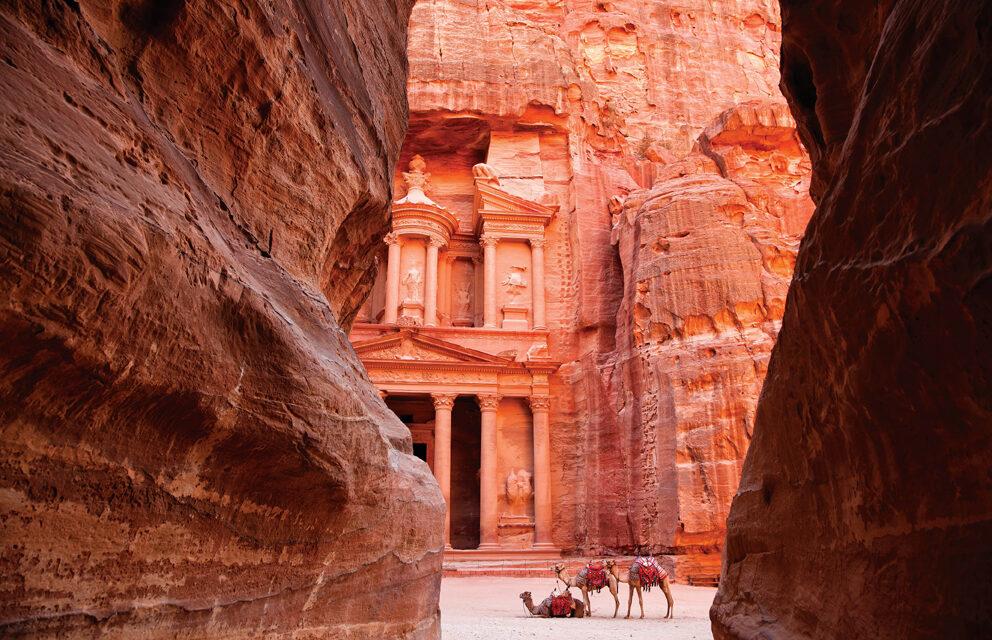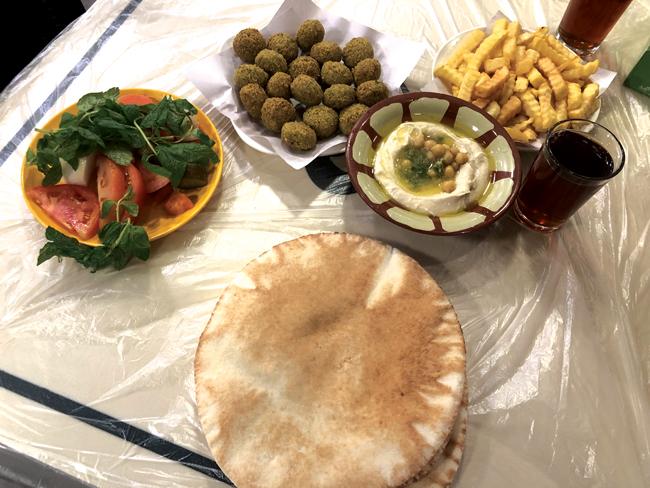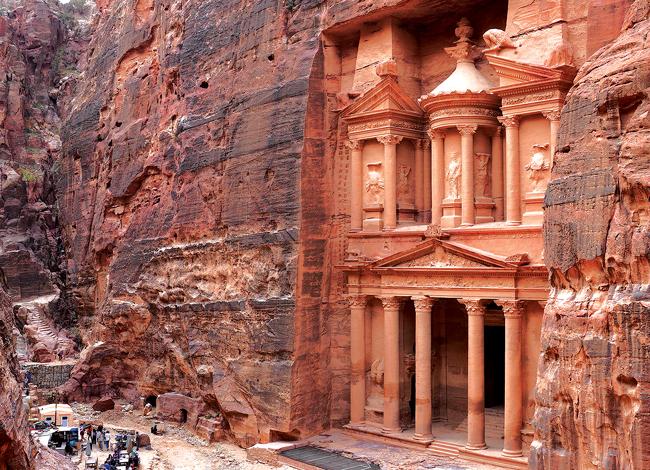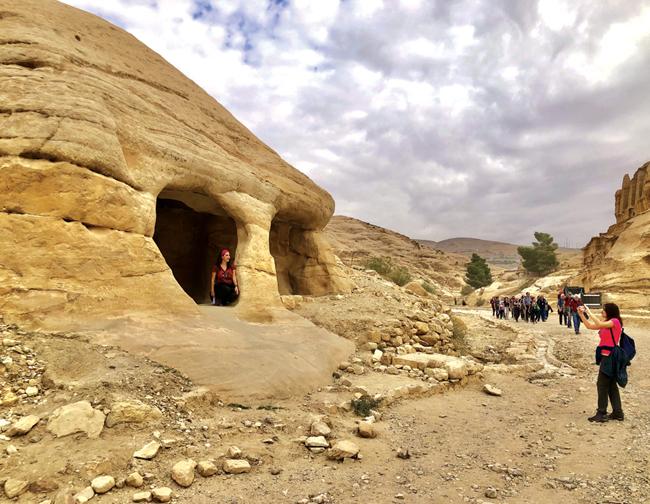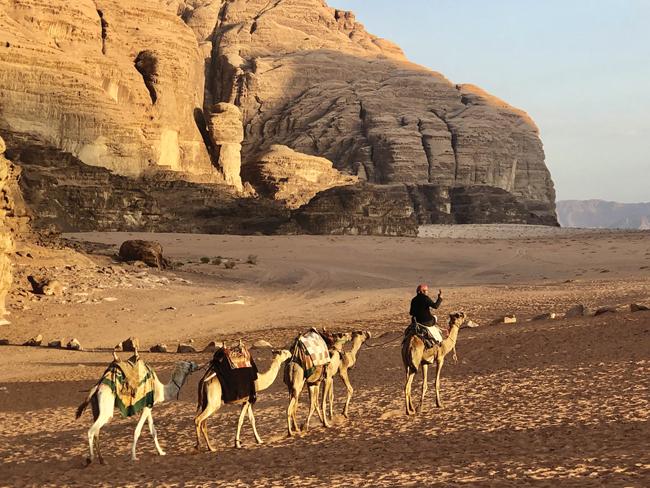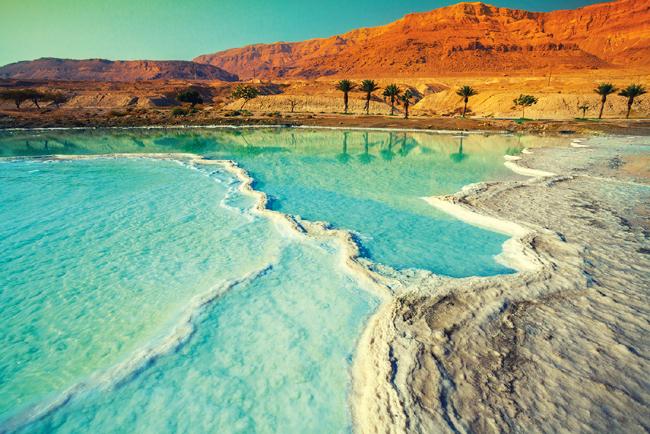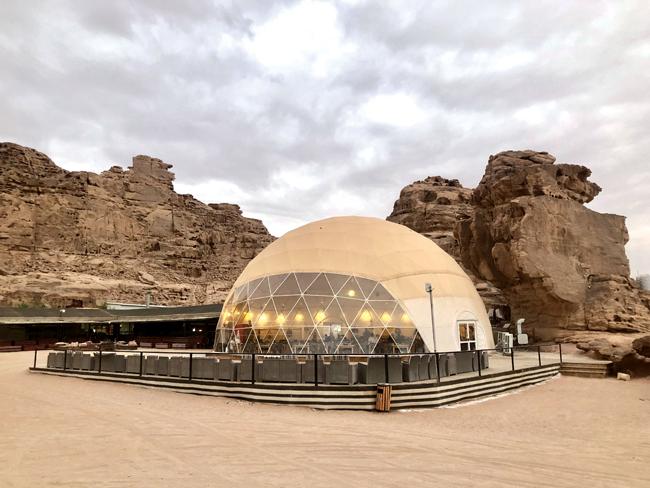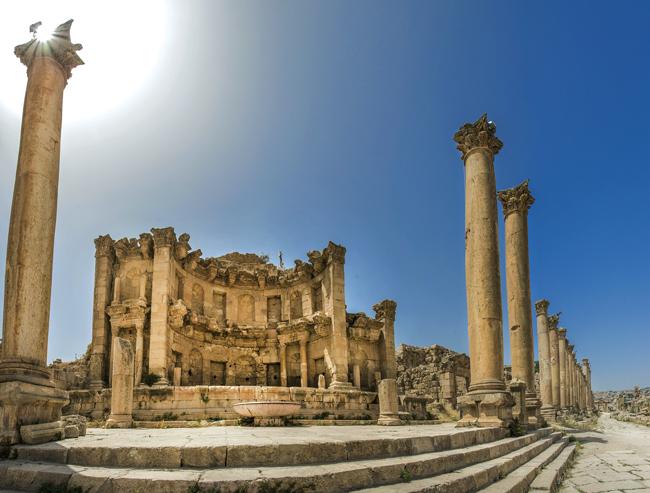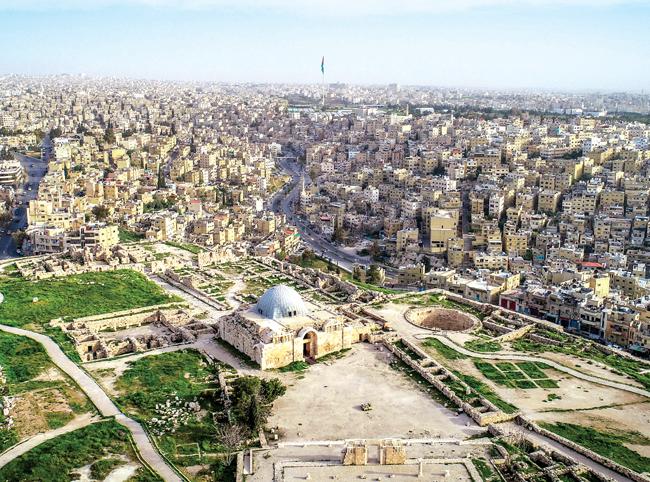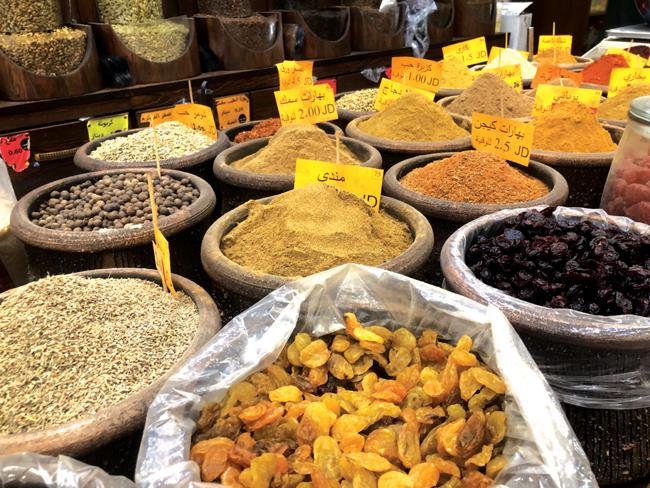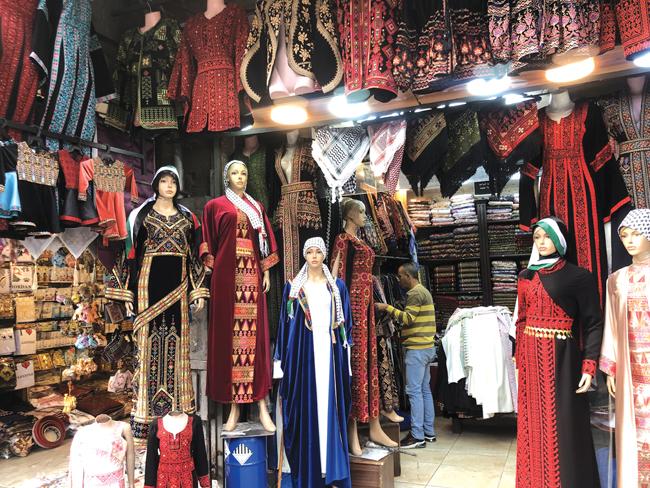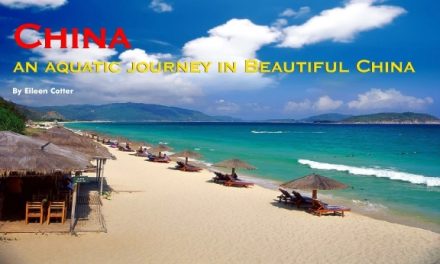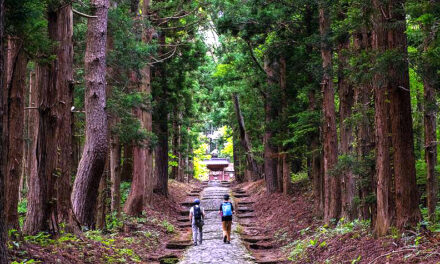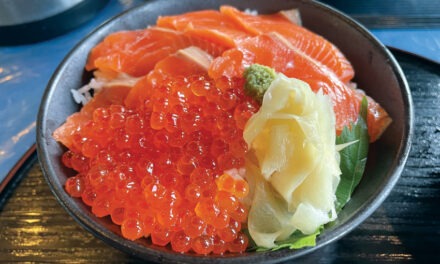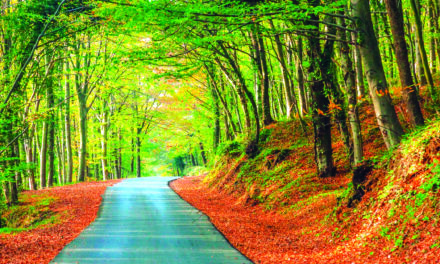Jordan
Jordan Offers Colorful Slices of the Middle East
by Randy Mink
Sometimes it’s the simple things you remember most. One of the fondest memories of my recent small-group trip to Jordan with Goway Travel was an impromptu picnic lunch at a little clifftop park in Wadi Musa, a scrappy town clinging to hills outside the ruins of Petra, the country’s most famous tourist attraction.
On the way to the unassuming roadside park, our driver—named Aladdin—let off our guide, Michel Safar, who ran into Jupiter Falafel while we waited in the mini bus. He brought out grease-stained sacks of piping-hot falafel—those tasty deep-fried balls of ground chickpeas—along with drinks, plastic tubs of hummus and fluffy pita bread straight from the oven. The order also included shawarma, the Middle Eastern street food standby of meat and chopped vegetables wrapped in pita.
There we were, enjoying a typical Jordanian lunch while feasting on panoramas of the rumpled, wind-eroded mountains that cloak the ancient city of Petra, where we had spent the morning. Stray cats eager for food scraps kept us company. A peaceful setting indeed.
Tourists Feel Safe and Secure in Jordan
In a region of the world rife with conflict, the Hashemite Kingdom of Jordan itself has been an oasis of calm and stability for decades. During our six-night trip, we felt safe and rarely brought up the Israel-Hamas war. Watching reports on my hotel TV in Jordan, I didn’t feel any closer to the fighting in Gaza than I did watching the news at home, despite our obvious proximity to the Israel border.
To no one’s surprise, tourism to the Middle East is suffering. In many cases we had hotel and tourist restaurants to ourselves. At highway rest stops, our bus often was alone in the parking lot.
Toronto-based Goway Travel and other tour operators are still offering trips to the region, often combining Jordan with Egypt, Saudi Arabia and other countries. In dreaming about your next international trip, don’t automatically dismiss this fascinating part of the world. It’s a captivating mix of Arab culture, mesmerizing desert scenery and world-class archaeological sites.
“Jordan is an ideal destination for globetrotters who seek culture, history and hospitality,” says Moira Smith, vice president, Africa and Asia, Goway Travel. “Despite the tourism slowdown, Jordan is safe, open and welcoming. It is a great time to visit with fewer crowds.”
Like neighboring Israel, Jordan is compact, so the main tourist sites are not more than a few hours apart. The infrastructure is excellent, hotels are up to Western standards and the Jordanian people are among the most hospitable anywhere. English is widely understood, and many signs are in both English and Arabic.
These are some of the trip highlights:
Petra: A World Wonder
Petra, in southern Jordan, ranks among the greatest monuments of antiquity. Hidden for centuries from prying eyes, the “lost city” was known only to nomadic Bedouin tribes until discovered in 1812 by a young Swiss explorer. Carved from reddish sandstone outcroppings tucked within a series of rugged gorges, Petra—particularly the towering Hellenistic facade of the Treasury—commonly appears on travel posters and guidebook covers. The Rose Red City, as it’s called, is the “rock” star of Jordan tourism.
Before the Romans took Petra in 106 A.D., it was the capital of the Nabataeans, an industrious Arab people who traded in silk, spices, frankincense and myrrh. Clambering up stony trails or leisurely walking the valley floor, tourists encounter cave-like tombs, an amphitheater, and remains of temples and a Byzantine church.
Movie goers recognize the iconic Treasury from the final sequence in Indiana Jones and the Last Crusade. Outside Petra’s gates, shops with names like Indiana Jones Super Market peddle Indiana Jones hats and whips, along with Nabataean-style pottery, colorful caftans and other souvenirs.
It’s about a 20-minute walk from Petra’s entrance gate to the Siq, a chasm that leads to the Treasury. Upon your emergence from the shadowy, sheer-sided passageway, the sight of the sun-splashed masterpiece is simply magical. Decorated with Corinthian columns, friezes and figures sculpted from the cliff face, the Treasury (really a tomb) is crowned by a funerary urn, which, according to local legend, contains a pharaoh’s treasure.
Wadi Rum: Romancing the Desert Sands
South of Petra, another Hollywood classic, Lawrence of Arabia, was partly filmed in Wadi Rum, a vast desert area with rippling expanses of deep-pink sand interrupted by craggy monoliths. British Colonel T.E. Lawrence and King Faisal based their headquarters there during the Arab revolt against the Ottoman Turks in World War I. The dreamy, surreal landscape continues to color my best memories of Jordan.
Splitting up into 4×4 vehicles with seating in the truck bed, our Goway group enjoyed a two-hour ride through the sand, making stops to examine petroglyphs, see camels, have tea in a Bedouin-style tent and hike up one of the crags. Visitors also can opt for a guided camel trek.
At night we bedded down in relative luxury at Sun City, one of several Wadi Rum tourist encampments equipped with modern conveniences. Cabins, built on plank platforms and covered in fabric resembling Bedouin goat-hair tents, feature a comfortable bed and a bathroom with flush toilet and shower. In the dining hall, a geodesic-domed building, we filled our plates at a dinner buffet offering slow-cooked lamb and chicken, fried fish, roasted potatoes, rice, salads, breads, and a dessert table with Middle Eastern pastries.
Life is Good at the Dead Sea
After touring archaeological sites and Christian shrines heavy on history, tourists welcome the chance to relax at one of the deluxe resorts fronting the Dead Sea’s eastern shore. At 1,312 feet below sea level, the super-salty body of water (actually a lake) is the lowest spot on earth.
Goway accommodated us in the 5-star Movenpick Resort & Spa Dead Sea, perhaps the most beautiful hotel in the whole country. The main building, a stunning example of desert castle-style architecture, is opulently furnished with antiques, artwork and Arabic motifs. Many of the 358 guest rooms are housed in a two-story village complex lushly landscaped with palms, bougainvillea, citrus and olive trees, waterfalls and fountains.
Nothing lives in the Dead Sea because it’s 10 times saltier than the ocean. The high mineral content makes it virtually impossible to sink, so you can pose for a picture in the buoyant water while effortlessly floating on your back. Just don’t get water in your eyes—it will be sheer agony.
A therapeutic mud bath is the other must-do. From pots of oily black mud gathered from the sea floor, dig in and slather your wet body, face included, with mud. Wait 15 minutes for it to dry a bit, then go into the water and wash it off—but not before having your picture taken. Afterwards your skin will feel smooth, tingly and refreshed. Dead Sea resorts offer a variety of spa treatments and therapies using products derived from the briny water.
Going Back to Roman Times at Jerash
The extensive archaeological site of Jerash, less than an hour north of the capital city of Amman, is one of the best-preserved Greco-Roman provincial towns in the world. Landmarks include Hadrian’s Arch, built in 129 A.D. to commemorate the visit of Roman Emperor Hadrian; the Temples of Zeus and Artemis; Byzantine churches; two theaters; and the Hippodrome, an arena that hosted chariot races and other sports. On the colonnaded flagstone street, where some of the original 500 columns have been reassembled, we walked on ruts made by chariot wheels.
Amman Bubbles With Excitement
More than one-third of Jordan’s people live in this dynamic city of four million, a metropolis of blocky white limestone buildings sprawled across 20-some hills. Nicknamed the White City, it is the best place in Jordan to immerse yourself in Middle Eastern culture.
Though my favorite experiences were sampling street life in the Old City’s traditional souks, I liked being based in the fashionable Shmeisani district, away from the fray. Our Goway group stayed at the 66-room Al Qasr Metropole Hotel on a leafy residential street a short walk from the Hilton, Westin and other familiar brands. We could shop in the neighborhood’s state-of-the-art Carrefours supermarket and quash any feelings of homesickness at places like McDonald’s, Starbucks and KFC.
The congested shopping streets of the Old City, or downtown, huddle below the Citadel, an open-air museum that preserves ruins dating back to Amman’s beginnings. Logically, our city sightseeing started at this quiet hilltop sanctuary, which offered great views as we drifted between the Temple of Hercules, Byzantine church, Umayyad Palace complex and Jordan Archaeological Museum. After the Citadel, we descended the hill and visited the magnificent Roman Theatre, built in the second century when Amman was the Roman city of Philadelphia.
Shopping and Dining in the Old City
Stacked with merchandise from floor to ceiling and festooned with goods dangling above the sidewalk, downtown’s hole-in-the-wall shops deal in everything from cheap shoes to spangled “belly dancing” outfits.
Merchants purvey mosaic artwork, gold and silver jewelry, handwoven rugs and cushions, embroidered folk dresses and the red-and-white-checkered headdress (keffiyeh) commonly worn by men in Jordan and other parts of the Arab world. There are shiny brass tea sets, Bedouin robes and daggers, and artistically designed glass vessels filled with colored sand depicting desert scenes complete with camels.
Food vendors attend to mounds of tomatoes, dates, figs and dried apricots. Open sacks brim with teas, spices and nuts. Baskets and crates hold oranges, papayas and pomegranates.
For lunch downtown, the place to go is Hashem, Amman’s most famous falafel restaurant. Besides dipping our pita bread and crispy balls of falafel in a creamy hummus infused with olive oil and lemon juice, we enjoyed the french fries and vegetable plate that come with a standard order.
For dessert, we stopped at Habibah, a tiny shop turning out fresh hot knafeh, a filo-crusted sweet cheese soaked in honey and topped with pistachio bits, eaten with a plastic spoon from a paper plate. We found space to sit outside the bakery, mingling with the locals savoring this Middle Eastern treat.
On the Road
For me, half the fun of visiting Jordan was looking out the bus window at the passing parade of Middle Eastern life. One morning we might see shepherds with a flock of sheep or boys leading a herd of camels. In godforsaken desert settings we drove by simple homes with laundry drying on rooftop clotheslines and donkeys or goats in the yard. Olive trees dotted many of the desolate landscapes.
In the fertile Jordan River Valley, near the Dead Sea, we passed groves of date palms and citrus trees, banana plantations, and greenhouses growing tomatoes. Passing through small villages, I had the urge to hop out and take pictures of the roadside vendors hawking potatoes, oranges, and giant cabbages and cauliflowers from their trucks. In some towns it seemed as if the businesses were mainly automotive garages with piles of tires out front.
Goway Delivers a Quality Experience
I couldn’t have been happier with the arrangements made by Amman-based Karma House, Goway Travel’s partner on the ground in Jordan. Our driver, our guide and the meet-and-greet staffers who eased us through the Amman airport were real pros and obviously enjoyed showing us their country. Thanks to the seamless arrangements, everything went smoothly, with no bumps in the road.
Goway customizes trips to more than 100 destinations around the globe. Suggested Jordan itineraries include the 5-day “Taste of Jordan: Dead Sea, Petra, Wadi Rum & More,” 6-day “Authentic Jordan” and new 9-day “Jordan Odyssey.” Also new: the 12-day “Best of Jordan and Saudi Arabia.” For those with three weeks to spare, there is the 20-day “Ancient Wonders of Egypt, Jordan and Saudi Arabia.”

